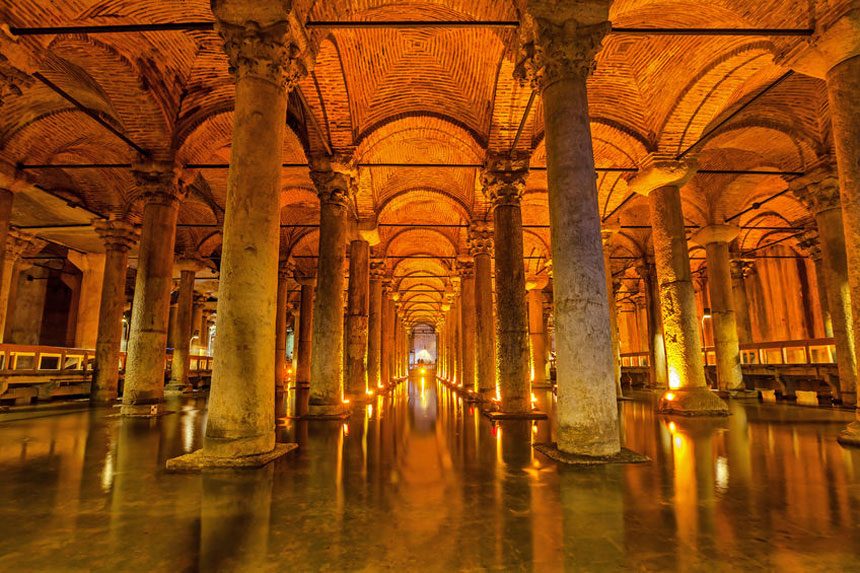
 Image credit: bbsferrari
Image credit: bbsferrariWhat
The Basilica Cistern is a Byzantine-era underground cistern located below the Sultanahmet Square. It was built in 532 by Emperor Justinian I as storage for the city’s water supply.
The cistern used to lie beneath the Stoa Basilica, thus, its name. The basilica is now long gone and only the cistern remains.
For a long time, the Basilica Cistern was a forgotten part of Istanbul history until it was rediscovered by Peter Gyllius in 1545. At that time, he noticed the locals drawing water, and sometimes even catching fish, from holes in their basements. He decided to explore these wells and found the huge cistern that was lying all along under the city.
The Basilica Cistern measures 138 metres (453 feet) in length and 64.6 metres (212 feet) in width. Its sheer size allows it to store 100,000 tons or close to 3 million cubic feet of water.
The ceiling is supported by 336 columns that were recycled from other buildings. Some columns reflect Corinthian designs, while others are Doric in style.
After its rediscovery, the Istanbul Metropolitan Municipality had the cistern dredged and cleaned up. It was finally opened to the public in 1987.
Why
Escape the hustle and bustle of the city and retreat to the quiet and serene atmosphere of the Basilica Cistern. Mood music and soft lighting have been added to this “Sunken Palace”, making the whole experience more romantic.
See it to admire the remarkable feat of engineering from the 6th century.
Highlights that you should not miss
Take a stroll inside the cold hall amid the symmetrically lined columns that is reminiscent of a palace court.
And make sure that you walk all the way to the northwest corner of the cistern where you can find the two uniquely placed Medusa heads that are used as bases for two pillars.
You can also try finding the “wishing column” and see if your wishes will come true.